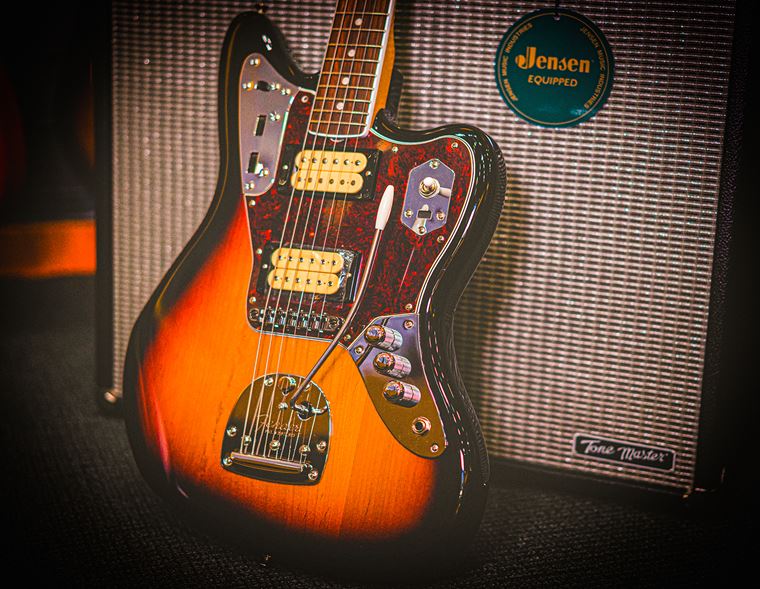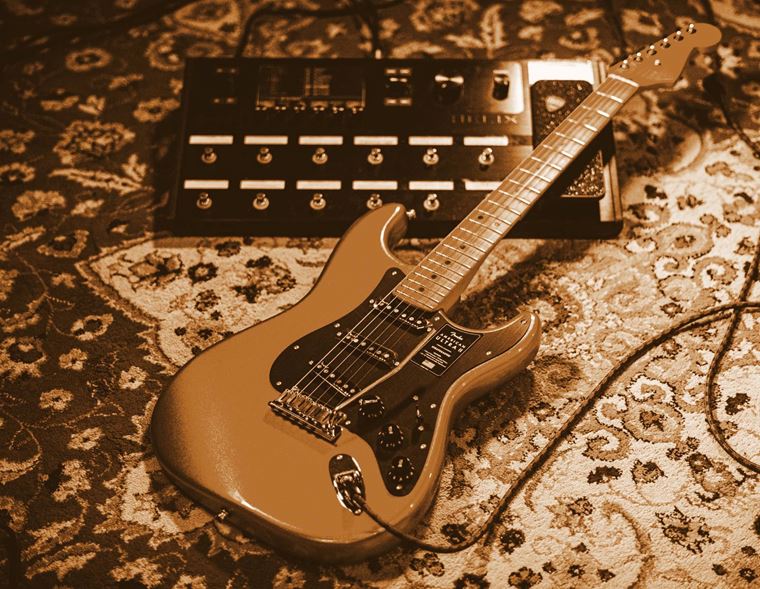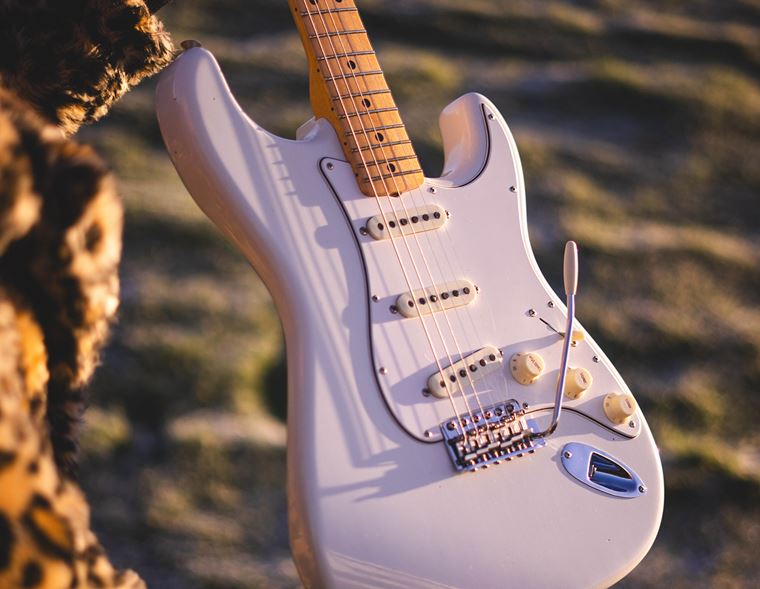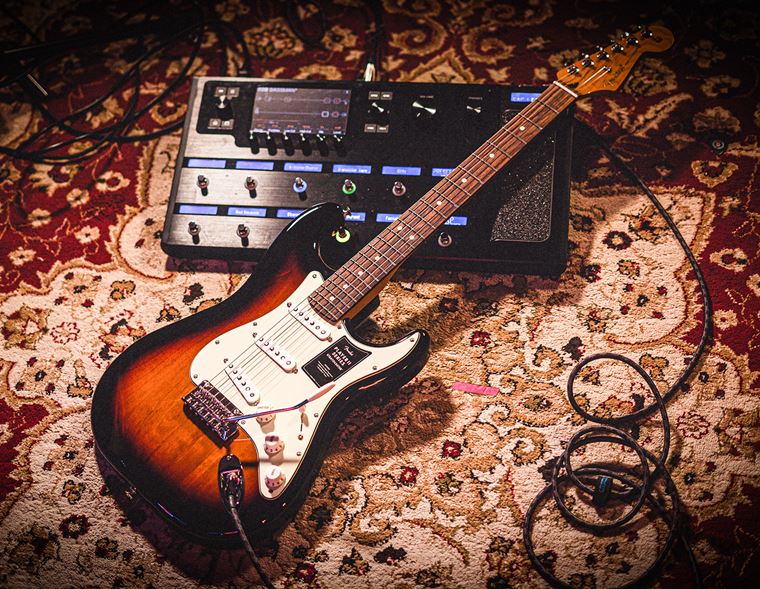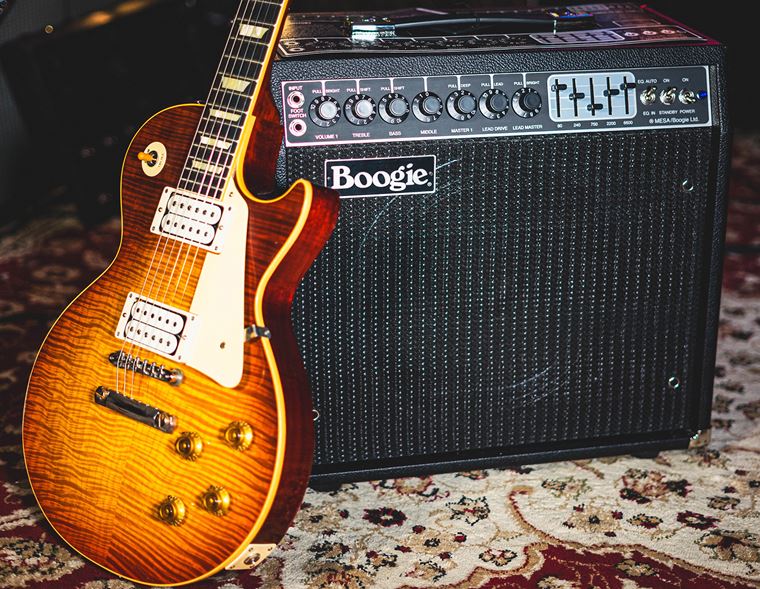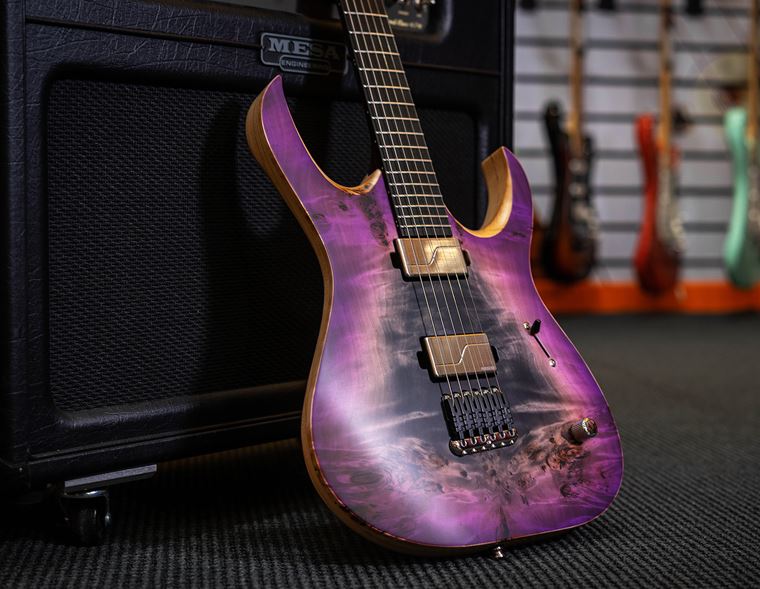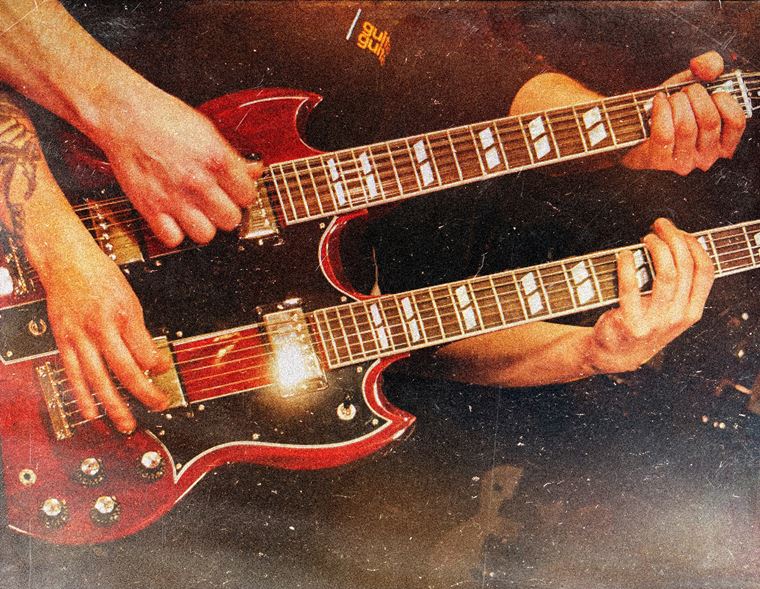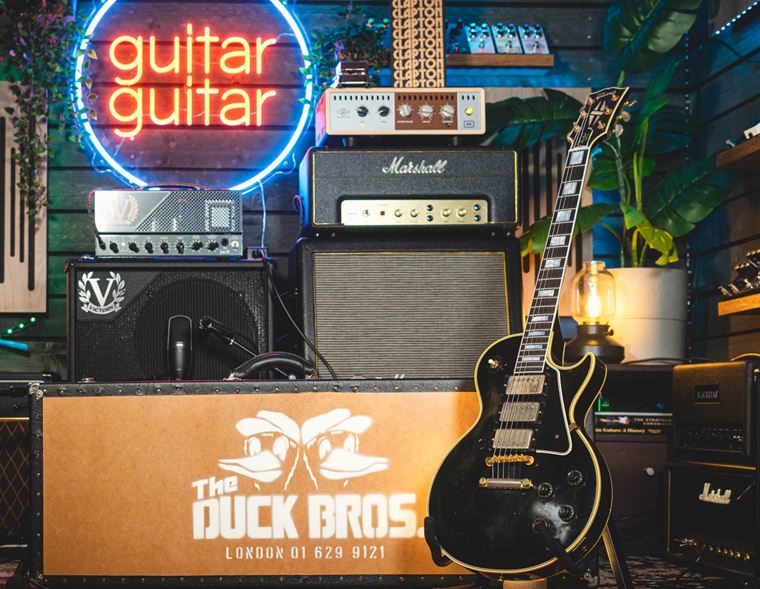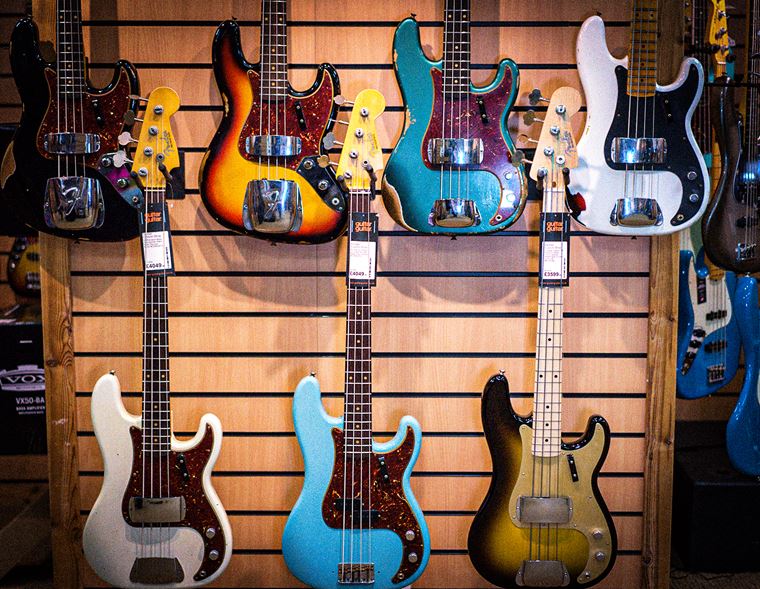Complete Guide to Line 6 Effects
Published on 02 June 2025
Line 6 are undoubtedly one of the dominant brands in guitar effects technology. Since their early days as inventors of the POD to their position in today’s market as makers of the Helix and more, they’ve come a long way and earned their place at the head of the table.

Today, I aim to collect together a useful guide to all of Line 6’s currently-made effects devices. I’ll not include their amplifiers (Spiders, Catalysts and so on) since they are a whole subject on their own, and I won’t spend much time on discontinued products unless it seems appropriate. I would say, though, that the Helix didn't arrive out of nowhere, and devices such as the M13 and the POD HD500X were instrumental in bringing the brand away from the old perspective of ‘almost there’ multi-fx into the new world that accepts digital modellers.
So here is how the Line 6 effects family look today, as of May 2025…
Contents
The Helix Family
- Multiple unites for different applications and price points
- Sound quality is equal across the range
- Significant brand support from Line 6 keeps things relevant
The Helix arrived ten years ago, as the flagship multi-fx modelling processor for Line 6. Since then, the range has expanded from the Helix Floor into a whole range of devices with different feature sets and footprints. You’ll see them all in a second, and they range from affordable stompbox simplicity to space-station levels of power and lights! It seems that Line 6 want every guitarist to own a Helix/HX unit, and are making it pretty difficult to say no!
I’ll detail the different models currently, but the thing that’s worth getting straight before we venture further is this: all of the tones & sounds - the main reason you buy any such device - remain exactly the same from the cheapest to the dearest Helix. You may not get as many sounds, or as much control over their parameters, but the actual tones themselves are the same across the board.

This is great news on a number of levels. Firstly, you don’t have to buy in right at the top to enjoy excellent sound; you can get it at whichever price point works for you. Also, I’ve noticed a number of players actually use more than one Helix unit, for different situations. For these players, they know that their ‘British Plexi’ tone or whatever will be the same every time, on every device. That’s something worth celebrating, I’d say.
There’s one extra point to add before we move onto the units themselves. I want to highlight how much Line 6 have kept their devices relevant in the market by always updating firmware, offering extra features and sounds (as in new amp, cab and effects models!), and getting artists to create custom patches. This is all free too - it’s part of the price of entry, as it were - and it applies to all Helix devices, not just the larger Floor and LT models. This is why so many guitarists use a Helix or HX device, and it’s to Line 6’s eternal credit that they’ve approached it as a service to musicians rather than a bunch of additional monetary charges for features. Long may it continue!
Anyway, here are the Helix family members, starting from the top:
Helix Floor
- Seriously impressive specs and sounds
- The Starship Enterprise of digital modellers
- Updates and support keep this extremely relevant
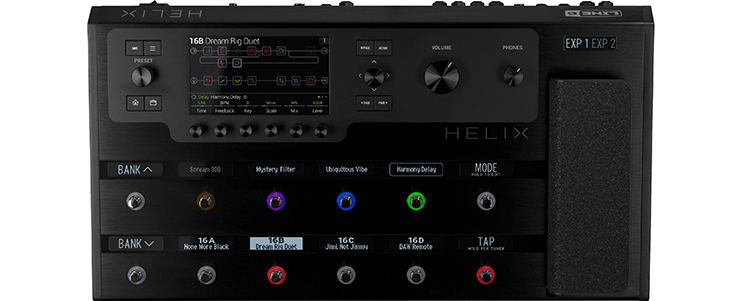
Line 6’s flagship Helix unit is the Helix Floor. Upon its release, the Helix floor was amongst the most powerful processors of its kind in the world, and whilst that may no longer be true, it's still a powerhouse. It’s a large, extremely comprehensive floor unit with a generously-sized LCD screen, touch-sensitive footswitches (with their own additional ‘scribble strip’ screens), an expression pedal and more ins & outs than you’ll ever reasonably need.
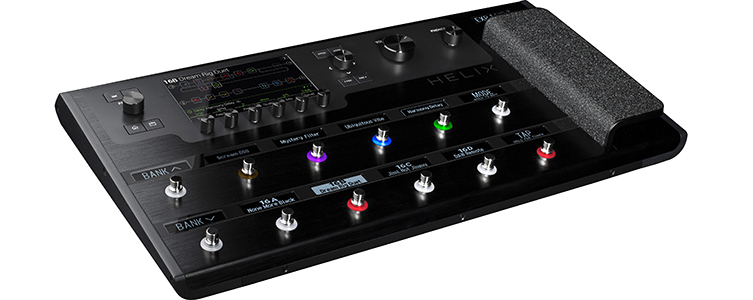
Best of all of course is the enormous palette of sounds on offer, and the quality of them. Guitarists will forever debate the relative qualities of Kemper, Axe FX and Helix sounds, but it’s very much within the eye (ears?) of the beholder. The quality is here for sure, and countless pros will attest to the real-life benefits of having such enormous power and flexibility at their feet.

In fact, here’s Peter Gabriel’s guitarist David Rhodes showing me how he makes the Helix the nerve centre of his sound on a huge worldwide tour:
A Helix Rack version is also available, featuring the same powerful processing and tones, though in an obviously different context. This rack mounted version is great for having in a recording studio, and can be used with a Helix Control foot controller if you find that you need that real-time hands-free control after all.

Helix LT
- Pretty much everything you need for less: less money, less weight
- All of the essentials from the Helix Floor: If you don’t miss it, you didn’t need it
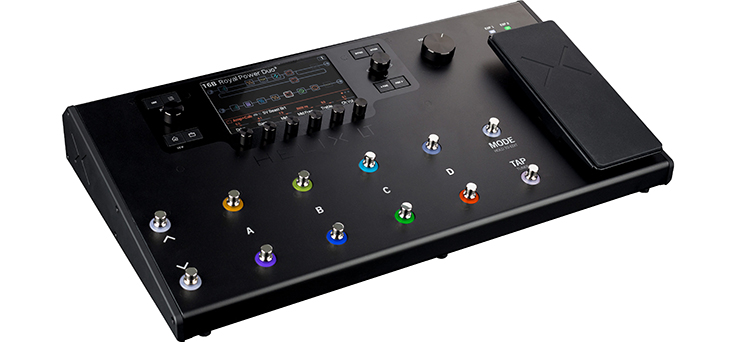
For those who want most of the trappings of the Helix floor but in a slightly simpler enclosure, the Helix LT is the answer. Rather than listing what has been kept in this edition, it’s easier to summarise by saying that this has everything the Helix Floor has, minus the following:
- Slightly smaller
- Slightly lighter
- No scribble strips for each footswitch
- Inputs and Outputs are less comprehensive
- Construction is still metal, but slightly less heavy-duty
- Some minor compromises in useability (eg pedal mode has only 8 pedals, not 10 like the Helix Floor)
Those really are the main changes. You don’t lose much! As I mentioned, the processing power, sounds and editability of sounds is the same. In all honesty, the Helix LT will be more than enough for most guitarists. If you need the specific I/Os provided by the Floor then that’s a definite reason to ‘go big’, but otherwise, I think the LT model is pretty hard to beat!

HX Stomp & Stomp XL
- Maximum portability, maximum Helix sound
- Go XL for more stomp-ability
- Your entire rig in a box smaller than your foot
For guitarists who favour portability, the HX Stomp is a very enticing proposition. These are units that you can bring absolutely anywhere: they take up very little space and weigh the same as a decent-sized delay pedal. Again, the full processing power of the bigger Helixes (Heli?) are onboard here, but in a far reduced physical object.
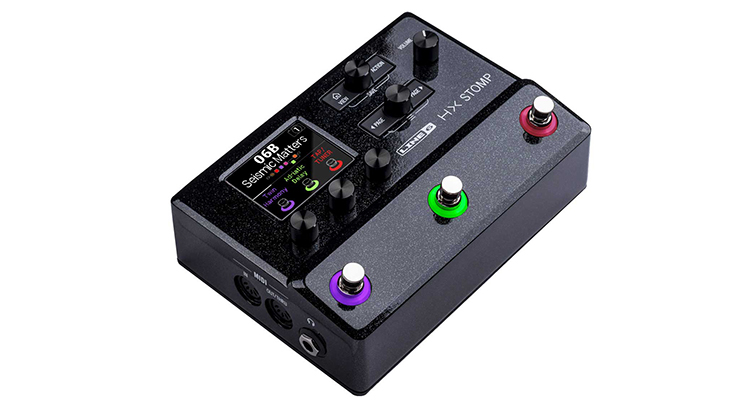
You do not get the inputs and outputs in anything like the same way as you do with the Helix Floor and the LT, as there is just no room! The screen is much smaller, with a more streamlined user interface too. There are far less footswitches, because the aim of the game here is all about form factor: you can literally throw this into your guitar’s gig bag and it’ll supply you with a whole performance’s worth of top-tier Helix tones.
The Hx Stomp is a great choice for touring players or members of large bands, as it takes up zero space on the floor or in the van. The sound quality is great, and if you don’t tend to do too much tap-dancing during a gig, then the Stomp is going to really answer a lot of your needs.

The Helix Stomp XL is simply a slightly bigger version of this same concept. The Stomp XL recognises that you may need ever-so-slightly more options at your feet than the Stomp offers, but you still want to enjoy the benefits of a super-portable rig. There are no extra features, just more footswitches (8 instead of 3), justification enough for those who need them. I think this is a pretty great option, to be honest, but it does depend on how often you are switching up your sounds.

HX Effects
- No amps, just a studio-full of stompboxes
- An easy ‘yes’ for FX fans who use an amplifier
- All the effects you’ve ever needed, plus a bunch for experimenting with
This one is a little bit different. Unlike the rest of the Helix range, the Line 6 HX Effects is not designed to be a full all-in-one tone solution. It does not contain amp models at all, just effects, so it is designed to be used as part of an existing setup (in the FX loop of an amplifier, for example).
Now, this is still quite a proposition, because Line 6’s effects are already industry standard in terms of quality, realism (many are modelled from genuine vintage pedals) and famous use.
Think about this: how many players over the years have made use of the green DL4 delay pedal? It’s as ubiquitous as a BOSS DD delay, and this is partly what is inside the HX Effects. (How long before Line 6 model their own DL4, I wonder?!) Every effect within the HX Effects - and the Helix range as a whole - has this level of pedigree.

If you tend to use effects with your traditional amp setup but get bogged down with heavy pedal boards, multiple power supplies and patch cables, then this simple box gives you a lot of hassle-free power.
I also think it earns its stripes for allowing you to try out & use the weirder, odder effects that exist out there: the ones that you’d love to use for maybe one section of a song, and so cannot justify either spending the money or giving up the pedalboard real estate for. Now you don’t need to compromise, because those tones are available alongside your essentials. You can be more creative because you’re able to change through hundreds of virtual effects easily. Sounds good to me!
HX One
- Any one effect at a time, from any effects category
- Helix-quality sounds in a stompbox
- Literally every guitarist can make good use of this
Taking the concept of the HX Effects to its minimal extreme is the Line 6 HX One. Basically, this unit can be all manner of effects pedals, but it can only be one at a time. So, it’s an amazing gap-filler for your physical pedal board: whatever you don’t have but do require, the HX One can provide, from drives to mods to ambience and everything else.
Impressively, the HX One is stereo (great for delays and reverbs) and also has a cool Flux feature for automating changes to your sound in real-time.
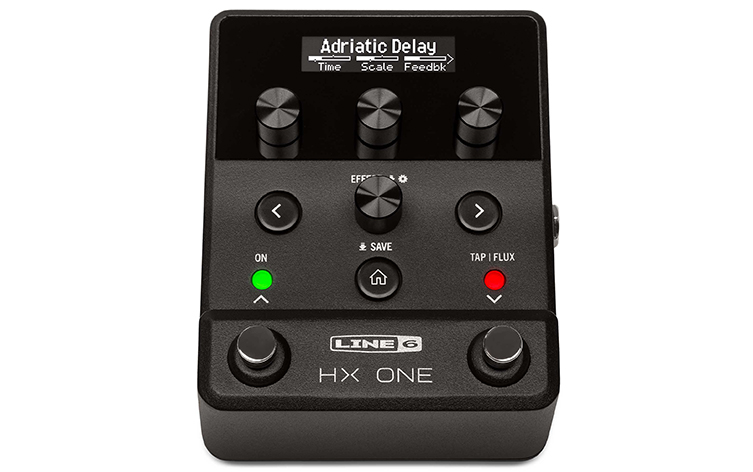
Non-Helix Line 6 Effects
Whilst the Helix family of effects are where Line 6 focus most of their attention, the trickle-down effect of technology means that less expensive effects can still impress, by taking advantage of prior innovations.
Line 6 are keeping the POD name alive in a number of devices that in reality offer similar experiences to the Helix-branded units, but with less cutting-edge tech inside. Still, as market leaders, all of their products have high quality sounds, so don’t instantly discount the POD stuff in favour of Helix, particularly if value for money is a high factor for you.
POD Go/POD Go Wireless
- Wallet friendly, comprehensive tone solution
- Wireless version includes built-in wireless receiver for cable-free playing
This POD Go unit looks specifically designed to compete with all of the NUX/Hotone/Mooer and such budget modellers on the market. There’s a lot of good, cheap modellers out there just now and so this POD is Line 6’s answer. It’s a lightweight device filled with nearly 300 sounds from across Line 6’s history, so it’s another portable gigging solution filled with very usable sounds and features.
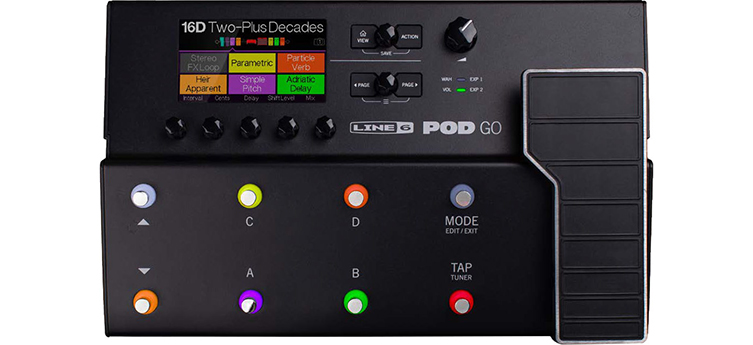
Not all of the sounds are ‘Helix quality’, but in practice there’s often very little to distinguish this: the tones are great regardless, and you can have up to 6 emulated sounds simultaneously. This should be enough for a large number of players, and the addition of a treadle pedal allows wider expression and volume control.
The wireless edition does bump the price up rather significantly, but if you wanted to go wireless anyway, then the POD Go Wireless has a Line 6 Relay (their own digital wireless system) built into the unit. Everything else is the same as the conventional wired POD Go, so if you were considering a move to a wireless setup, this may be the streamlined answer to your dreams.
Pod Express
- Simple to use
- Packed with sound
- Three versions to choose from
This miniscule Pandora’s box could be thought of as the ultimate gig saver. As you can see, you don’t get tons of switchability, but this thing has loads of Line 6 tone power inside and is the size of a standard stompbox. It’s also comparatively cheap, too! If you keep one of these in your gig bag as a spare, then you’ll never be without excellent tone, no matter what happens to your main rig.
There are three varieties of POD Express - Guitar, Bass and Black which is for harder, heavier styles - so rather than trying to be everything for everybody, Line 6 have been more specific. Choose the one you need the most, and you’ll have a more relevant choice of sounds and settings for your requirements.
In fairness, you could say that the HX Stomp does this job slightly better, but then look at the price difference! This is a very cost effective way to make sure you always have good quality tones available, no matter the circumstances. You can literally dial up a decent sound in seconds, and there’s a lot to be said for that, especially in the heat of battle!

Pocket POD
- Battery powered portability complete with a belt clip
- An oldie but a goodie
- Useful for practicing anywhere
The Pocket POD is still with us! As of time of writing (late May 2025), the Pocket POD has been around for roughly 800 years and is still proving useful to today’s guitarists!
Looking at the marketing blurb is a bit of a tell-tale sign of this unit’s genesis (“with over 300 custom presets dialed in by some of today's hottest rock stars like Maroon 5, P.O.D., 311, Hoobastank and many more”), but when you think about it, most of the guitar tones we want to use have been the same for decades, haven’t they? The Pocket POD may be old, but it’s still sounding decent, particularly for the spend required.

So, this unit harks back visually to the original ‘kidney bean’ POD, and it runs off a couple of batteries. Whilst I wouldn’t necessarily recommend gigging with this little thing, it technically is possible! It’s maybe better suited to headphone practice, and for recording guitar tones at a pinch.
It’ll never sound like a Matchless amp and Klon Centaur (you didn’t reasonably expect that though, did you?) but those of you who like harder edged & more processed tones will actually get on really well with what’s on offer here!
DL4 MkII
- Famous green delay pedal updated
- Longer looper, double the delay models
- XLR input for vocal mics and more
Finally, it’s the famous green delay pedal! Actually, it’s the sequel model, the DL4 MKII. In its original form, this was (is) one of the most popular delay pedals in the world. Why? Well, it was that perfect combination of great sounds - which mimicked famous vintage delays and echoes - hassle-free operation and the inclusion of an intuitive built-in looper that made it a no-brainer. In short, it was pretty much all things to all players, and has formed the basis of all of Line 6’s delay-based endeavours since.

So what’s different about this MkII version?
Well, it looks a little different and it's lighter in weight, but the real bonus is that you get DOUBLE the effects models! Everything from the original model remains, so no sounds are replaced, just added to. The looper is also longer, which I can definitely appreciate!
For features, sound and ease of use, it's no secret why the DL4 is one of the most recognised pedals on boards across the planet. The MkII changes none of that, and in fact just opens up the horizons even further.

Line 6: FX Powerhouse
This is everything that Line 6 currently offer in the way of effects. As mentioned, I’ve not included amps, wireless systems and speakers, but it's clear either way that the brand’s fingerprint is hugely significant in today's guitar universe.
From the beginner to the pro, we see Line 6 equipment giving players what they need in an accessible and useful way. All price points are catered to, which shrewdly brings more players ‘into the family’, after which those players will likely upgrade within Line 6’s product line, rather than re-learn a whole new way of operating something unfamiliar.
I didn’t cover their innovative guitars either, since they don’t currently offer them, but a quick Google of ‘Variax’ will lead you down that path of mostly underutilised innovation.
Today, Line 6 dominate a market that most guitarists want to know about: digital modeling and effects. They’ve been in the modelling game since the beginning and now hold a rightful space in the pantheon.
What’s next? We’ll need to just wait and see, but something tells me we won’t be waiting too long…
Click to View All Line 6 Effects


